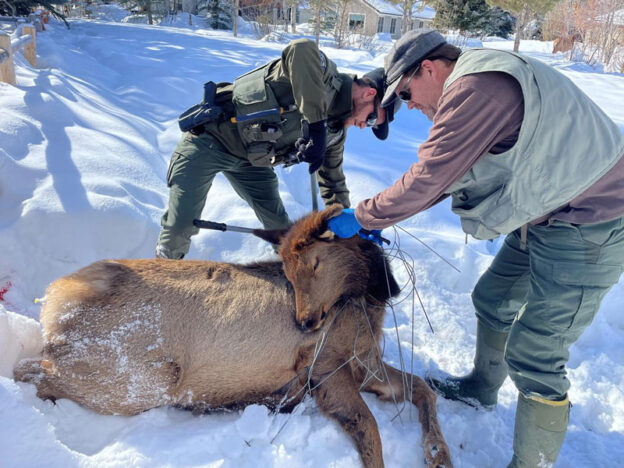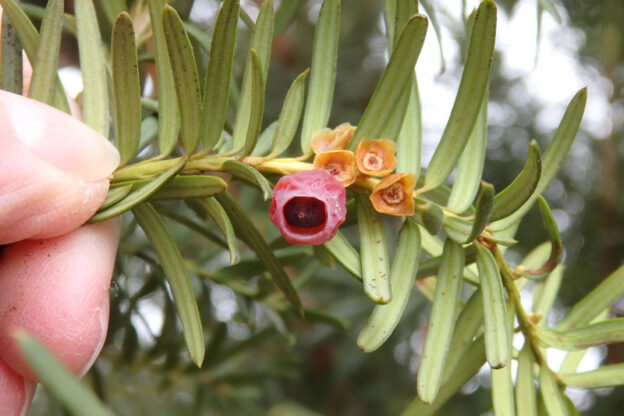Elk, deer, and moose can easily become entangled in items found around farms and residences
Over the last week, Fish and Game have received four reports of elk in the Wood River Valley becoming entangled in items found in residents’ yards, especially garden equipment. Since February 1, elk have become entangled in wire tomato cages, a 5-gallon plastic bucket and a sled and rope. Locations vary from Bellevue, Hailey, and north into the areas of Ohio Gulch and East Fork.
Over the past few years, wildlife has become entangled in a wide range of objects, such as swing sets, hammocks, a dream catcher lawn decoration, tomato cages, a tennis court net, Christmas lights, Christmas wreaths, clotheslines, barbed wire, bailing twine, horse halter and lead rope, and the bottom of a bird feeder.
Residents that live near wildlife, especially elk, deer, and moose, should inspect their yards, fences, pastures, and all other parts of their property for items that could entangle wildlife, and if found, immediately remove them and securely store them in an area that wildlife cannot access.
Tomato cages are particularly troublesome for deer, elk, and even moose because they will stick their heads into the wire cage to get at garden vegetation left from the previous year’s garden.

